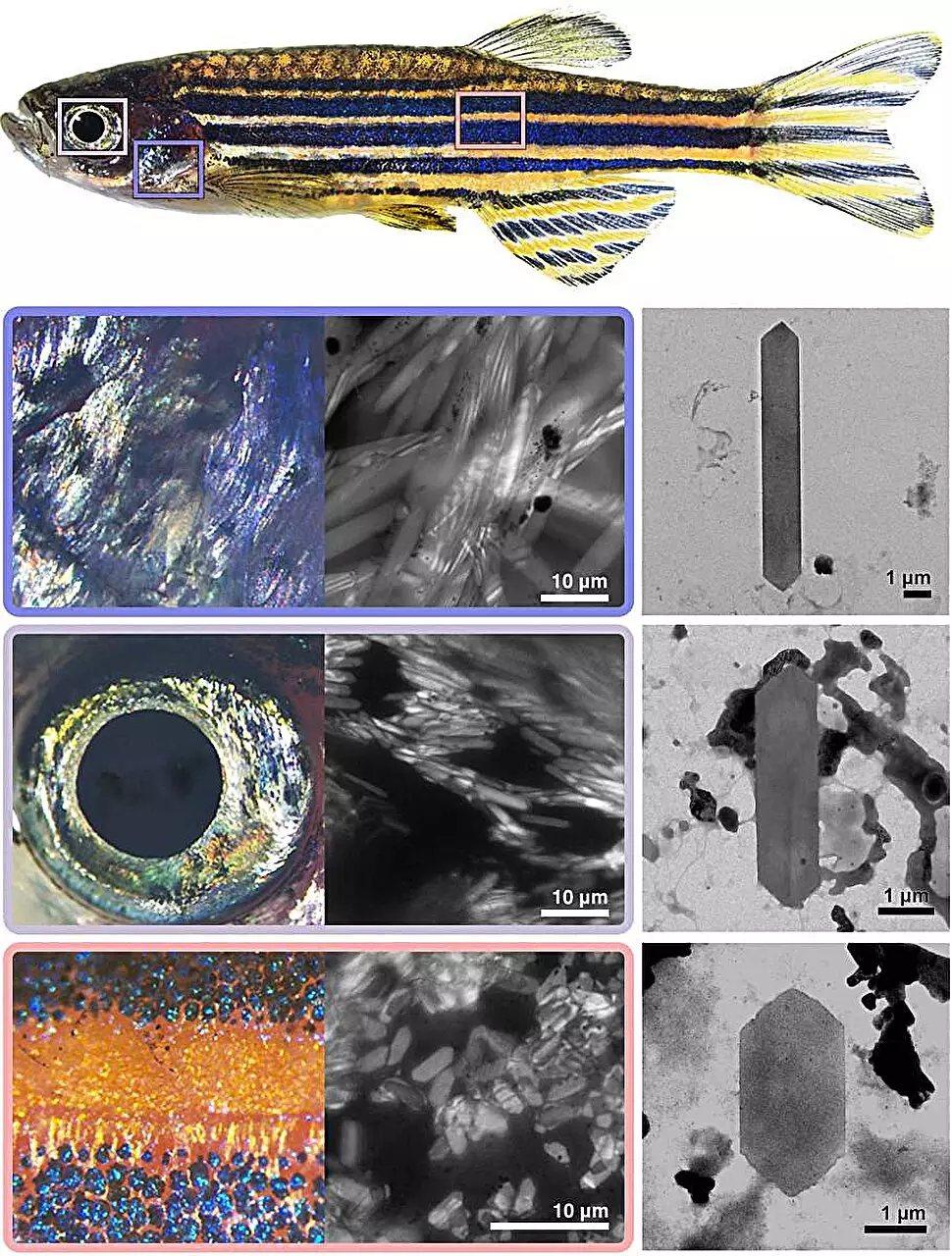

Crystallization is often associated with processes that occur far from the natural world, such as the creation of synthetic gems or the production of illicit substances. However, nature has its own set of remarkable crystal artisans. Birds, fish, and even reptiles wield the remarkable ability to produce crystals intrinsically within their biological framework. This article will explore the intricate mechanisms behind the production of biological crystals, specifically focusing on the groundbreaking research into zebrafish, which serves as a model organism for understanding this phenomenon.
What links vastly different organisms like fish, chameleons, and crustaceans? An astonishingly simple answer: their cellular machinery employs just two molecular building blocks—guanine and hypoxanthine—to create a surprisingly wide array of crystalline structures. The potential applications of these biological crystals are far-reaching; from enabling organisms to camouflage themselves and regulate temperature to aiding in communication and vision. Researchers have become increasingly intrigued by the concept of utilizing minimal molecular resources to produce such diverse and aesthetically pleasing crystals. Yet, until now, there has been a lack of clarity on how these biological processes unfold, particularly within the confines of the animal kingdom.
At the forefront of this scientific investigation stands the zebrafish, a vibrant freshwater species famed for its striking visual qualities and rich color palette. Its body showcases a multitude of shimmering spot patterns created by various types of crystals. The Observatory of the Weizmann Institute of Science has shifted focus onto these finned creatures.
Upon dissecting the zebrafish’s tissues, researchers found that the crystals throughout its body varied prominently in shape, size, and color. For instance, the operculum covering the gills shone with silvery brilliance, while the eyes reflected a captivating blue glow. By studying the structures at the microscopic level, scientists likened their findings to the work of culinary experts who adjust ingredients to produce varied dishes.
The composition and shape of the crystals found in zebrafish depend largely on the proportionate relationship between guanine and hypoxanthine. When these molecules are combined in different ratios, the resulting variety in crystal structures can be likened to a skilled chef adjusting recipes to create new flavors or textures. Researchers noted that just as a chef alters their recipes to achieve specific taste nuances, the zebrafish is capable of modulating its crystal formations to serve distinct biological functions.
By carefully examining the molecular makeup of these crystals, scientists successfully synthesized various types of zebrafish crystals in the lab. Their experiments verified that the proportions of guanine and hypoxanthine directly impact the crystal’s optical properties and functionality.
To comprehend how these crystals are produced without interfering with other cellular processes, researchers isolated iridophores, the cells responsible for crystal production in zebrafish. Their inquiry unveiled important information regarding the balance of enzymes present in these cells. Astoundingly, while iridophores were rich in enzymes contributing to crystal formation, they contained surprisingly low levels of other related enzymes.
This paradox suggested that the distinct assortment of enzymes present in individual iridophores is what affords them the capability to create diverse crystal shapes and functions without disrupting other cellular functions. Unique enzyme production allows zebrafish to maintain the delicate equilibrium necessary for the proper functioning of their biological systems.
In an effort to validate their theories, researchers engineered a zebrafish incapable of expressing a specific enzyme (pnp4a), critical for the formulation of guanine. The outcomes were telling; the manipulated fish exhibited stark disparities in their crystalline structures compared to regular zebrafish, underscoring the role that enzyme balance plays in determining the characteristics of crystals.
This line of experimentation opened up new avenues for understanding how the interplay of various factors—gene expression, enzyme levels, and molecular ratios—affects biological crystal formation.
Through careful investigation of zebrafish crystal formation, researchers have uncovered a complex interplay of mechanisms that govern how living organisms manipulate a mere two molecules to create an astonishing range of crystal structures. This research not only catapults our understanding of biological processes but also encapsulates nature’s elegance and simplicity. By deciphering these natural systems, we are one step closer to innovating human applications that harness the same principles—uncovering the beauty held within the simplicity of biological design. The journey into the crystalline world continues, inspiring future endeavors to unlock even more secrets of our planet’s rich tapestry of life.
Rogue waves have long been a subject of fascination and terror in maritime lore. These…
As the world grapples with public health challenges, especially those posed by infectious diseases, the…
The Sombrero Galaxy, also known as Messier 104, embodies a breathtaking blend of spirals and…
In recent advances in quantum electronics, a groundbreaking discovery leveraging the concept of kink states…
In the intricate tapestry of nature, ice often exists in a delicate balance with liquid…
In an astonishing event that captured global attention, a rogue object from beyond our Solar…
This website uses cookies.